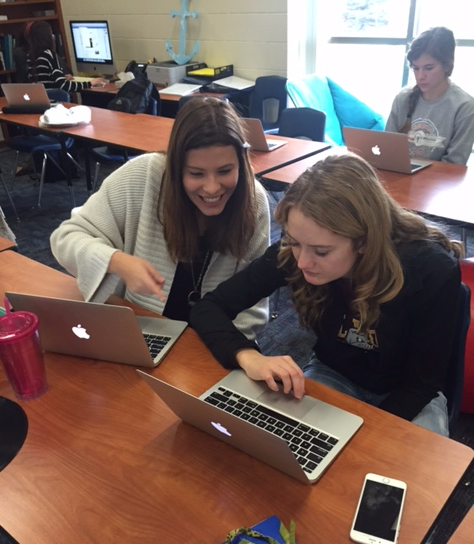This summer, Bay Port High School IB educators Amy Richards and Vicki Quinn presented at the IB 2015 Conference of the Americas to discuss technology usage within IB classrooms. In their presentation, “The IB learner in the digital age: redefining collaborative and creative learning with free technology tools” Quinn and Richards talked about how technology can enhance creative development and inquiry-based learning.
We followed up with them to learn more about how they integrate technology in their classrooms. Find out which tools Richards and Quinn use in their IB English courses. What works best in your classroom?
What is one of your favourite technology tools to use in the classroom? Why?
Amy Richards: Padlet is a great, quick board for posting student-generated research, responses, and anything really. Get Coffee works nicely for group discussions. Students can propose questions which are quickly inputted into a website generator. I especially like Get Coffee as a means to practice on-the-spot, effective responses needed for DP English.
Vicki Quinn: One of my favourite tools is a simple one: Google Drive. I ask students to use Google Docs to work with each other on the writing process and group collaboration. For example, I can assign a passage typed up in a Google document and ask individuals in the classroom to collectively annotate it at the same time.
How has the increased use of technology encouraged inquiry-based learning for your students?
Amy Richards: Technology offers extra avenues for students to generate ideas, both individually and collectively. Our classrooms consist of student voices sharing, questioning, and building upon these shared thoughts. My voice, at least when directed to the entire class, is heard much less these days. Most days the technology on which students gathered ideas is on computer screens as well as on the classroom whiteboard. Students are discussing with and adding to one another’s inquiries.
Vicki Quinn: Our IB classroom existed in that sphere already, but access to technology has encouraged our use of inquiry-based learning for our students because now we can ask students to communicate in digital educational blogs where they share their creativity. We can ask students to practice “net-etiquette”, we can deliver flipped instruction via podcasts, videos, and internet-based presentations, and we can engage them through problem-solving activities and projects using various Web 2.0 tools.
What’s the biggest challenge in increasing technology usage in the classroom?
Amy Richards: At the start, it was tempting to find new technology tools while excitedly wondering: “how can these be included in students’ learning?” Now, we develop the learning experience first and then search for technology to potentially assist. Currently, the challenge is to find technology that functions like we want it to. For instance, I recently wanted a platform on which students could easily annotate a poetic text heavy in imagery with their own ideas, images, and audio. I struggled to find the right technology. Ultimately, I used Genuis’ Embed feature on a webpage I created.
Vicky Quinn: It is challenging to keep up with technology and to keep students interested in a digital learning experience when there are so many technology-based distractions on same platform. What I have learned is that using technology effectively is dependent on facilitators who can inspire and motivate learners in a purposeful and guided digital experience. As someone who has implemented a blended classroom experience for my students, I have learned an essential component of e-learning: it still requires the art of teaching.
For more information, visit Quinn and Richards’s website.
Contributing author Kari Lorentson is writing about the experience of IB graduates at universities around the world. Lorentson studies at American University and previously attended Fishers High School. Contact her at alumni.relations@ibo.org.

